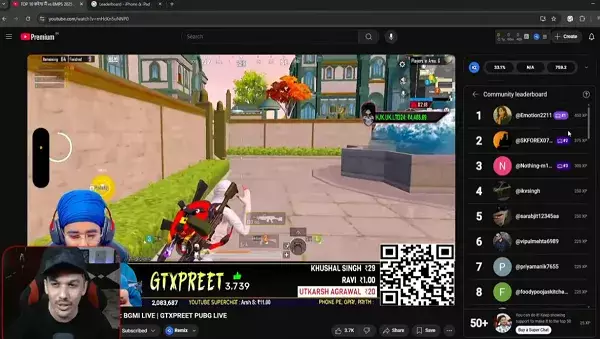The digital landscape is awash with the concept of gamification, a trend that harnesses gaming principles to inspire user engagement. Platforms across the board are adapting to this trend in a bid to captivate and retain audiences, and YouTube is no exception. Recently, they unveiled a gamified engagement leaderboard aimed at injecting zest into livestream interactions. The ambition is clear: foster viewer participation through a competitive lens. But at what cost? Is this an innovative leap forward or merely a flashy gimmick that glosses over deeper engagement issues?
Understanding the Engagement Leaderboard
The engagement leaderboard is positioned to spotlight the most active viewers during a livestream by ranking them based on various forms of contributions—comments, Super Chats, Super Stickers, and virtual gifts. A crown icon denotes the top contributors in real-time, a visual cue fostering a sense of achievement and status. While such recognition can enhance a viewer’s connection to a stream, the fundamental question persists: does this recognition translate into meaningful engagement? The leaderboard might draw attention, but genuine community building requires more than fleeting accolades.
The Passive vs. Active Dichotomy
What’s intriguing about this new feature is its potential to create a passive versus active viewer dichotomy. The leaderboard offers a visible metric of engagement, yet it inherently disadvantages quieter viewers who contribute valuably but prefer less visibility. This might fracture the communal essence of livestreaming, which has traditionally celebrated diverse participation strategies. YouTube risks favoring those who crave competition over those who engage on a smoother, more personal level, thereby alienating a segment of its viewership that may not be inclined toward gamified recognition.
Financial Implications and the Descent into Competition
One cannot downplay the financial incentives tied to this leaderboard. For content creators, an engaged audience translates to increased purchases of Super Chats and gifts, potentially resulting in higher earnings. Yet, as viewers scramble to secure prime spots on the leaderboard, the drive for competition might overshadow genuine viewer relationships and community spirit. This capitalistic angle to gamification raises ethical questions: does the need for revenue compromise the integrity of content creation? The focus shifts from establishing meaningful connections to simply exploiting competitive instincts for profit.
The Risks of Territory Marking
The integration of such competitive structures brings forth a risk of territory marking—pitting viewers against one another in an unhealthy chase for status. Content creators may inadvertently cultivate an environment where the focus is on recognition rather than contribution, sidelining those who, while perhaps not as vocal or flamboyant, still offer rich and diverse insights. This creates a profound shift in the dynamics of engagement, veering away from community-building to a race where only a few emerge as winners.
The Need for User Feedback
As YouTube tests this engagement leaderboard, the incarnation of this feature will hinge on user feedback. While initial excitement might be palpable, the longevity of this initiative will depend on how well it addresses community dynamics and the variety of user preferences. Adjustments must be made to ensure that the leaderboard enhances rather than detracts from authentic connections. After all, the long-term success of a community-driven platform like YouTube is contingent upon a balanced ecosystem where both competition and collaboration coexist.
To achieve success with this engagement leaderboard, YouTube must strike a delicate balance. Gamification, while intriguing, should serve as a tool for genuine interaction rather than a distraction from authentic engagement. If the goal is to enrich the livestreaming experience and strengthen viewer camaraderie, the platform must remain vigilant about the consequences of fostering competition. Ultimately, enhancing user engagement ought to celebrate the multitude of voices that make up a community rather than signaling the rise of a select few at the expense of the many.









Leave a Reply